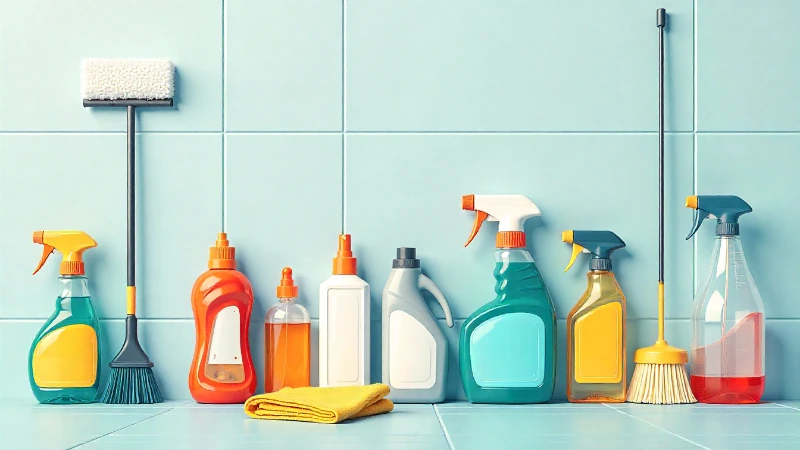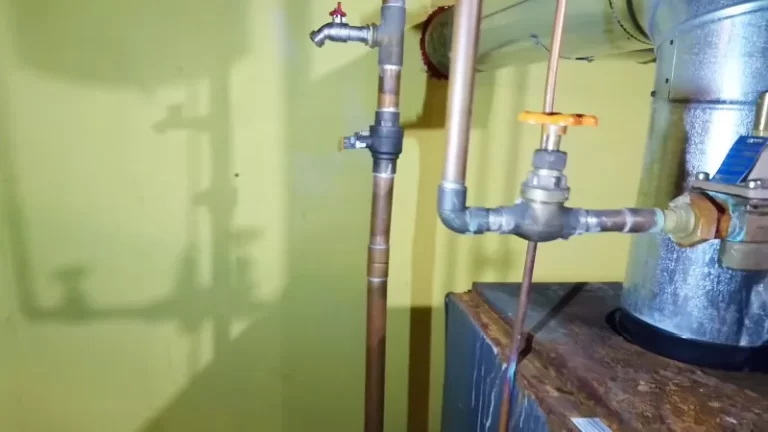How to Clean Pipe Dope: Your Ultimate Guide for Any Surface
Pipe dope, also known as pipe thread sealant, is a plumber’s best friend and a homeowner’s occasional nightmare. It’s the go-to compound for creating a leak-proof seal on threaded pipe joints. But its sticky, greasy, and resilient nature means it can create a frustrating mess that gets on everything.
Whether you’re a seasoned professional or a DIY enthusiast, you’ve likely faced the challenge of removing this stubborn sealant from hands, clothes, tools, and floors. This guide provides a comprehensive, step-by-step approach to cleaning pipe dope from virtually any surface, ensuring your project looks clean and professional.
You'll Learn About
The Sticky Situation: Why Is Pipe Dope So Hard to Clean?
Understanding what makes pipe dope so persistent is the first step to defeating it. Most pipe sealants are a complex mixture of oils, solvents, and filler materials like PTFE (Teflon). This formula is designed to be waterproof, chemically resistant, and non-hardening.
These properties make it excellent for sealing pipes but also make it resistant to simple soap and water. The oils allow it to penetrate surfaces, while the fillers create a tenacious film that clings stubbornly. The key is using the right solvent to break down its oil base.
Safety First: Precautions Before You Start Cleaning
Before you grab the nearest chemical, it’s crucial to prioritize safety. Many effective cleaning agents are harsh and require careful handling. Always work in a well-ventilated area to avoid inhaling fumes, especially when using chemical solvents like mineral spirits.
Always wear protective gear, including nitrile gloves to protect your skin and safety glasses to shield your eyes from splashes. Before using any new product, test it on a small, hidden area of the surface to ensure it doesn’t cause damage or discoloration.
How to Clean Pipe Dope from Your Hands and Skin
Getting pipe dope on your hands is almost unavoidable during any plumbing project. Washing with regular soap and water often just smears the mess around. Here are more effective methods to get your hands clean.
The Mechanical Method: Wipes and Scrubbing
For fresh pipe dope, start with the simplest approach. Heavy-duty degreasing hand wipes, often used by mechanics, are specifically designed to cut through grease and oil. They are highly effective and convenient to keep in your toolbox.
If wipes aren’t enough, use a pumice-based soap like Lava or a similar gritty hand cleaner. The mild abrasive action helps scrub the sealant from the skin’s pores without being overly harsh. Follow up with a good moisturizer, as these methods can dry out your skin.
Solvents and Degreasers for Stubborn Messes
For dried-on or particularly stubborn pipe dope, you may need a solvent. A surprisingly effective and gentle option is a common household oil, like vegetable, olive, or mineral oil. Like dissolves like; the oil will break down the dope’s oily base.
Apply the oil to your hands and rub them together vigorously, then wipe away the residue with a paper towel. For more aggressive cleaning, you can use isopropyl (rubbing) alcohol, WD-40, or a dedicated citrus-based degreaser. Always wash your hands thoroughly with soap and water after using any solvent.
Removing Pipe Dope from Clothing and Fabrics
A small smear of pipe dope can quickly ruin a good pair of work pants or a shirt. The key to successful removal from fabric is to act as quickly as possible before the stain has a chance to set deep into the fibers.
Step-by-Step Guide for Fresh Stains
First, carefully scrape off any excess sealant from the fabric using a dull knife, spoon, or credit card. Be careful not to press it deeper into the material. Avoid rubbing the stain, as this will only spread it.
Next, apply a pre-treatment cleaner directly to the spot. A high-quality liquid dish soap, particularly one known for its degreasing properties, works well. You can also use a heavy-duty laundry stain remover. Work the cleaner into the stain gently with your fingers or a soft brush, let it sit for 15-30 minutes, and then launder the garment as usual in the warmest water the fabric can tolerate.
Tackling Set-in or Dried Stains
Dried pipe dope stains are a tougher challenge. You will likely need a solvent-based cleaner like rubbing alcohol, Goof Off, or even WD-40. Always test the solvent on an inside seam or hidden area of the garment first to ensure it doesn’t cause discoloration.
Apply the solvent to a clean cloth and blot the stain from the outside in to prevent it from spreading. You should see the dope transferring to the cloth. Once the stain is lifted, pre-treat with dish soap or stain remover and launder immediately.

Cleaning Excess Pipe Dope from Pipe Threads and Fittings
A clean, professional-looking plumbing job is free of messy sealant squeezing out from the joints. Cleaning excess dope is not just about aesthetics; it also prevents dirt and debris from collecting on the sticky residue.
Cleaning Wet, Excess Dope
This is the easiest scenario. Immediately after tightening a fitting, take a clean, dry rag or paper towel and wipe away the excess dope that has squeezed out. A single, clean wipe is usually all it takes for a perfect finish.
This simple step is a hallmark of quality workmanship. It’s especially important when you are learning how do you seal black gas pipes, where precision and cleanliness are critical for safety and inspection.
Removing Cured or Dried Pipe Dope
Disassembling old plumbing often reveals threads caked with hardened, cured sealant. This old dope must be completely removed to ensure the new connection seals properly. Start by using a stiff wire brush to physically remove as much of the old material as possible. Use a brass brush on brass or copper fittings to avoid scratching the soft metal.
For very stubborn, hardened dope, apply a penetrating oil or solvent to help soften it. After letting it sit for a few minutes, resume brushing. A small pick or the tip of a flathead screwdriver can be used to carefully clean out the grooves of the threads. This process is essential before you can how to fix leaking threaded joint without cutting, as a proper seal depends entirely on clean, well-prepared threads.
How to Clean Pipe Dope Spills on Various Surfaces
Accidents happen, and a dropped brush or a drippy can may leave a sticky mess on your floor or work surface. The cleaning method depends entirely on the type of surface you are dealing with. Using the wrong approach can turn a small spill into permanent damage.
Hard Surfaces: Tile, Concrete, and Metal
Non-porous surfaces are the most forgiving. For fresh spills, wipe up as much as you can with a paper towel. For the remaining film, use a cloth dampened with a degreaser or mineral spirits. Wipe the area clean and follow up with a standard surface cleaner if needed.
On concrete, you can be more aggressive. Use a wire brush and a degreasing solvent to scrub the area. Since concrete is porous, it may leave a slight dark spot, but this will often fade over time.
Porous Surfaces: Wood, Drywall, and Carpet
These surfaces are much trickier. For finished wood floors or furniture, scrape off the excess immediately. Use a cloth with a minimal amount of mineral spirits, wipe the spot quickly, and then immediately wipe the area with a clean, damp cloth to remove the solvent. The solvent can strip the wood’s finish if left on for too long.
On carpet, the situation is difficult. Scrape up the excess, then blot with a solvent-based carpet spot remover. Do not rub. This is often a job best left to professional carpet cleaners, as the risk of permanently setting the stain is very high.
| Surface | Recommended Cleaner | Effectiveness | Safety Notes |
|---|---|---|---|
| Hands/Skin | Degreasing Wipes, Pumice Soap, Oil | High | Moisturize skin after cleaning to prevent dryness. |
| Clothing | Dish Soap, Stain Remover, Rubbing Alcohol | Moderate to High | Test on an inconspicuous area first to check for colorfastness. |
| Metal Pipe Threads | Wire Brush, Mineral Spirits, WD-40 | Very High | Wear eye protection to guard against flying debris. |
| Finished Wood | Mineral Spirits (sparingly) | Moderate | Can damage finish. Work quickly and test in a hidden spot. |
| Carpet | Solvent-based Spot Cleaner | Low to Moderate | High risk of spreading or setting the stain. Professional help is recommended. |
| Tile/Concrete | Degreaser, Mineral Spirits | High | Ensure the area is well-ventilated to avoid inhaling fumes. |
Prevention is the Best Cure: Tips to Avoid the Mess
The easiest way to deal with a pipe dope mess is to prevent it from happening in the first place. A few simple techniques and a little preparation can save you a significant amount of cleanup time later.
Proper Application Technique
The number one rule is that less is more. You only need enough sealant to fill the threads. Apply the dope only to the male pipe threads, and always leave the first one or two threads bare. This prevents the sealant from being pushed inside the pipe, where it can clog valves or fixtures.
Use the dauber that comes in the can or a small, dedicated brush. A smooth, even coat is all that is required. Piling on excessive amounts of dope does not create a better seal; it only creates a bigger mess to clean up.
Setting Up Your Workspace
Before you even open the can of pipe dope, prepare your work area. Lay down a drop cloth, a piece of cardboard, or some old newspapers to protect the floor. This is especially vital when working over finished surfaces like hardwood or carpet.
Keep a roll of paper towels or a dedicated “dope rag” within arm’s reach. Having cleaning supplies ready means you can wipe up any drips or smears immediately. This forethought is a lifesaver on larger DIY projects, such as when you convert patio heater to natural gas, which involves making multiple clean, secure connections.
Frequently Asked Questions (FAQ)
There are many common questions and myths surrounding pipe dope and how to clean it. Here are answers to a few of the most frequent inquiries.
Can I use gasoline to clean pipe dope?
While gasoline is a powerful solvent that can dissolve pipe dope, you should absolutely never use it for cleaning. It is extremely flammable, its fumes are explosive and toxic, and it poses an incredible fire hazard. Stick to commercially available and much safer alternatives like mineral spirits or dedicated degreasers.
Is pipe dope toxic?
Most modern pipe thread sealants sold today are non-toxic and safe for their intended use, with many being certified for use on potable water lines. However, they can cause skin irritation with prolonged contact, and they should never be ingested. Always check the product’s packaging or its Safety Data Sheet (SDS) for specific health and safety information.
Does pipe dope ever fully dry?
This is a common misconception. The vast majority of pipe dopes are non-hardening. They are designed to set to a firm, paste-like consistency but remain pliable. This flexibility allows the joint to remain sealed despite vibrations, and temperature-related expansion and contraction of the pipes.
Final Thoughts: Mastering the Mess
Pipe dope is an essential material for reliable, leak-free plumbing. While its sticky nature can be a challenge, it’s a mess that can be managed and conquered with the right knowledge and tools. The key principles are to act quickly on spills, choose the correct solvent for the surface, and always put safety first.
By following the techniques in this guide and practicing a little preventative care, you can keep the mess to a minimum. You can confidently complete your plumbing projects with the clean, professional finish they deserve. Don’t let the fear of a sticky situation keep you from achieving a perfect seal every time.

